Filling your home with greenery is not only an excellent move style-wise, but it can help improve air quality, and apparently even your mood. Not all homes were created equal, however, and it can be tricky to understand which popular indoor plants will be the best ones for your space. From low-light indoor plants to the best options for cleaner air, we’ve pulled together a juicy beginner’s guide to choosing the (mostly low-maintenance) greenery that you’re going to be least likely to kill – we hope.
Choosing the best low-light indoor plants for your home
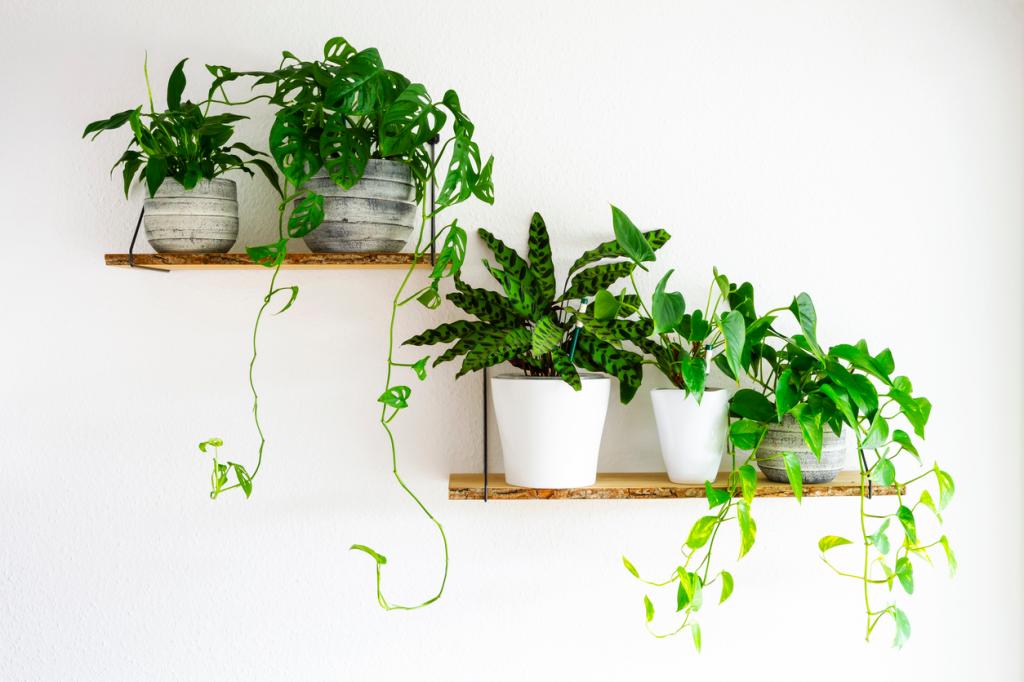
Discussions about the benefits of indoor plants for air quality have been floating around for many years now. NASA even completed a report on the matter. The fact is that plants have the ability to remove toxins from the air, making indoor environments much healthier for you to hang out in.
However, different plants like different environments, so it’s worth taking a look at which ones are going to thrive best in your home – so that you can make the most of these little air purifiers. Starting first with low-light plants, we’ll go through some varieties that should hopefully suit your space well.
Philodendron Xanadu
Per Bunnings, these green babies are a great option for indoors as they are particularly adaptable to low-light settings. They also look gorgeous! Just remember to water regularly.
Snake Plants:
An incredibly popular choice, the Snake plant is an incredibly easy option for indoor settings, as Elle Prince from Plants in a Box explained to us in a previous article. These plants “will grow in any light level, low to high,” she shared.
Zamioculcas Zamifolia (ZZ Plants):
These plants are considered by Prince to be “Possibly the toughest houseplant of all.” Simply put, it doesn’t need a lot of light (or watering) to live its best life.
Golden Pothos (Devil’s Ivy):
Prince shared with us that the Golden Pothos “…possibly got Devil’s Ivy as a name because he is so darn hard to kill.” It handles low light well and so enjoys indoor settings.
Peace Lily (Spathiphyllum wallisii):
Returning to Bunnings, the Peace Lily is another lovely indoor plant option that can happily plod along without loads of light.
Other types of indoor plants
As we touched on above, the plants that will work best for you are going to differ according to your needs, the environment you live in and the amount of space you have. Below, we’ll move through all the best plants to purchase, based on common circumstances.
Low-maintenance indoor plants
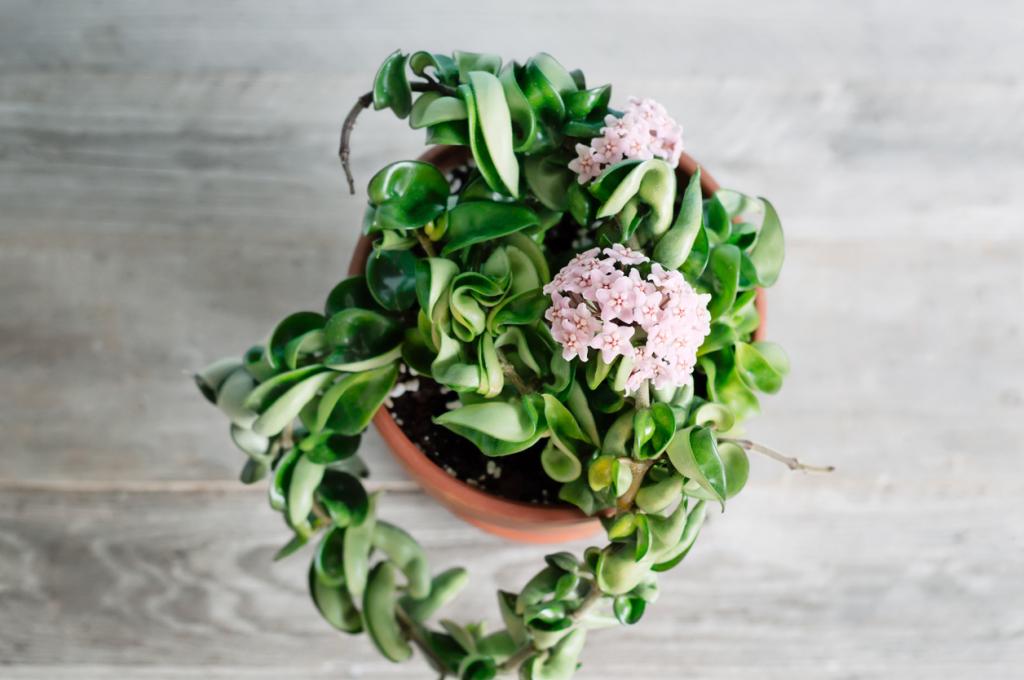
It could be said that all the plants listed in our low-light category are also low-maintenance… however, there are some indoor plants that require little care, but still do need some bright light. Here are the plants that we recommend if you don’t have lots of time for care, but do have access to some light indoors.
Hoya:
Per Prince, Hoya vines are not fussy plants, so you’re likely to find a spot that will keep it happy. She shared that “Hoya vines are stunning indoor plants and require very little attention. They are lovers of bright indirect light of course, air, and frequent watering just so the soil is moist.”
Fiddle Leaf Fig (Ficus lyrata):
Bunnings shares that while the popular indoor plant, the Fiddle Lead Fig, does need to be in a well-lit area, it’s not one that needs too much care.
Calathea (Calathea spp.):
This pretty little plant likes mid-level light and moist soil, but apart from that doesn’t ask much of its owners.
Best indoor plants for clean air
It’s worth noting that all plants are wonderful to keep around the home, but there are some that are particularly great for air purifying purposes.
Bunnings has shared its list of the best types of indoor plants to shop for if you’re after cleaner air at home. Here are a handful of options.
- Bamboo Palm (Chamaedorea seifrizii)
- Boston Fern (Nephrolepis exaltata ‘Bostoniensis’)
- Mother-in-law’s Tongue (Sansevieria trifasciata’Laurentii’)
- Corn Plant (Dracaena fragrans ‘Massangeana’)
- English Ivy (Hedera helix)
Large indoor plants
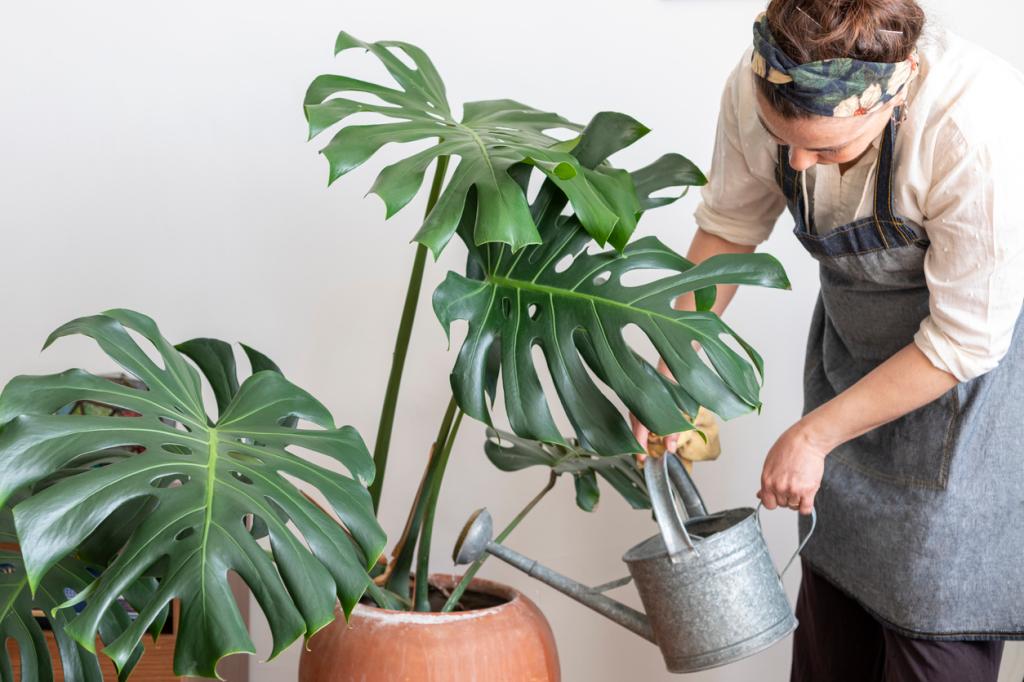
Filling an empty corner with a large, lush plant is a quick way to make a stale-looking room feel a whole lot more vibrant. But, of course, you need to select one that will be happy in the environment you’re popping it into. Here are some low-maintenance large indoor plant suggestions:
Monstera Deliciosa:
This is an incredibly popular indoor plant as it doesn’t require too much care, but looks incredible. Per Bunnings, it requires bright filtered sunlight, but you can water sparingly. This plant can grow very large, so use a stake to support it as it becomes larger.
Bird of Paradise:
This lush indoor plant can grow to become very large, and makes an incredible statement in a home. It likes bright light and moist soil – best to keep this one away from pets, however.
Dieffenbachia:
Another beautiful, popular tropical plant, the Dieffenbachia can also fill an empty space in your home – as long as it receives bright, indirect light. Again, not one for pets.
Indoor hanging plants worth considering
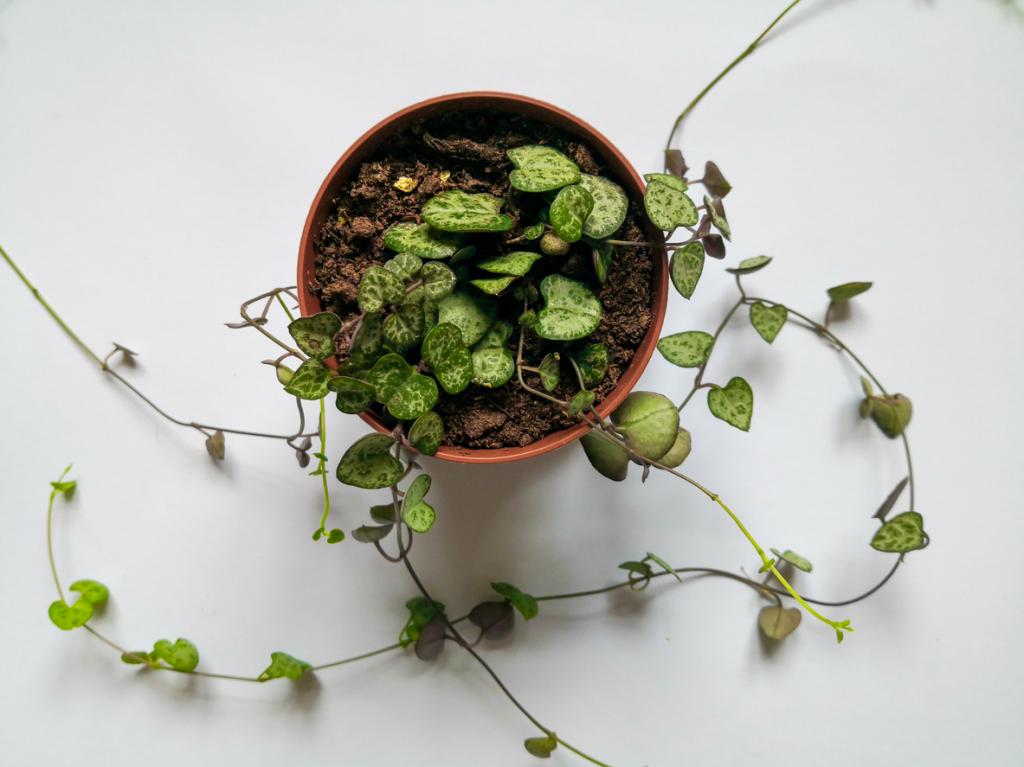
If you’re after hanging indoor plants, Bunnings suggests looking for options that are fairly tough, low maintenance, and will not outgrow their baskets too easily. For this reason, it recommends ‘trailing’ plants in this case. Perennials or succulents are a good (and popular) indoor plant option here, it shares.
The types of indoor plants it points to here include:
- String of pearls (Senecio rowleyanus)
- Chain of hearts (Ceropegia woodii)
- Zygocactus or Christmas cactus (Schlumbergera varieties)
- Petunias
- Dwarf marigolds
Indoor flowering plants
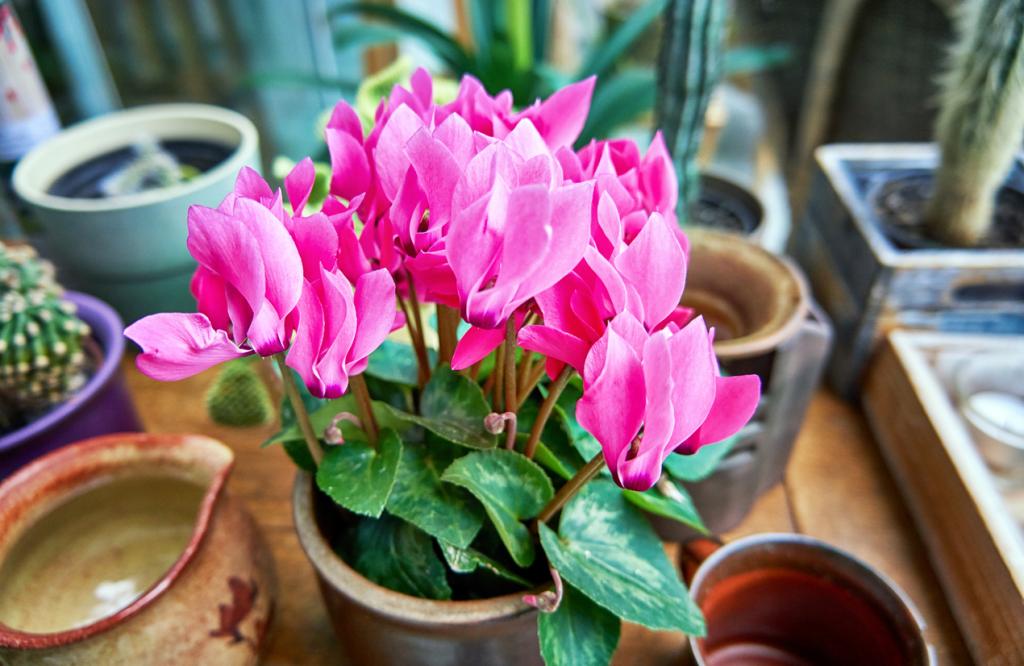
For those who want a splash of colour indoors, why not consider one of the below types of indoor flowering plants?
Anthurium (Anthurium ambianum):
Technically, these guys don’t actually flower. Rather, they produce colourful ‘spathes’. Bunnings shares that these range from green-white to purple in colour, and they’re quite lovely. These indoor plants like indirect light and don’t want excessive watering.
Cyclamen (Cyclamen persicum):
According to The Spruce, these popular indoor plants produce sweet heart-shaped flowers in a range of colours (white, pink, red, purple). They make great house plants, but keep them away from pets! They like bright, indirect light and infrequent watering.
Phalaenopsis orchid (Phalaenopsis spp.):
These orchids are lovely to look at as they come in all kinds of colours, from pale purple to white. They can be a little tricky to care for – they like occasional fertiliser, and you’ll need to adjust your watering schedule according to the season (less in the cooler months) – but once you master the art, you’ll have a striking indoor plant to show off.
Popular indoor plants of 2023
Yes, there are plant trends that take over our homes each year. If you’re unconvinced, just look at the year the Fiddle Leaf Fig became the ‘it’ plant of the moment – it still remains incredibly popular as a result.
In any case, assorted sites have pointed to popular indoor plants for 2023, and we thought we’d share a few of the stand outs with you here.
The Spruce shared it thought the following five were 2023’s picks:
- Philodendron Brasil (Philodendron hederaceum ‘Brasil’)
- Succulent Bulbs
- Calathea Rattlesnake (Goeppertia insignis)
- Ficus Audrey (Ficus benghalensis)
- White Knight Philodendron (Philodendron ‘White Knight’)
Apartment Therapy, on the other hand, thought these five were the ones to keep an eye out for:
- Chameleon ZZ plant (Zamioculcas zamiifolia ‘Chameleon’)
- Lemon Meringue pothos (Epipremnum aureum ‘Lemon Meringue’)
- Philodendron ‘White Knight’
- Hoya
- White bird of paradise (Strelitzia nicolai)
Expert advice on the best indoor plants
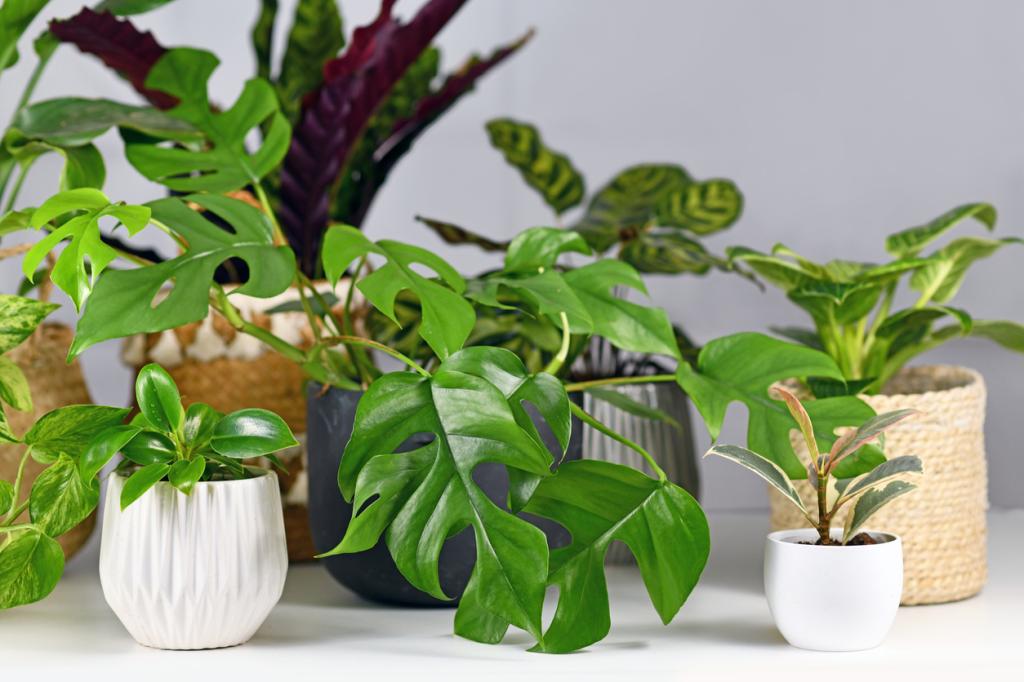
As we touched on earlier, Elle Prince from Plants in a Box spoke with us at length (here) about the best low-maintenance indoor plants to buy.
According to her expert opinion, these three are some of the easiest indoor plants to introduce to your home:
Monstera Tauerii:
“The most popular boy in the potting shed is Monstera Tauerii (the dwarf version of the deliciosa), exciting people with his large glossy green leaves,” Prince explained. “Happy in lower light areas, but if the light level is too low, Tauerii can get a bit leggy, so the occasional rotation will help ensure he has even growth on all sides.”
Aglaonema Lady Valentine:
“Lady Valentine offers plenty of colour pop. Her foliage offers a mix of greens and warm pinks surrounded by a dark green tinge. Lady Valentine will tolerate low light (a position with indirect light is OK) and let her soil dry out in between generous waterings. Too little light, though, and she will lose her blush colourings.”
Philodendron Minima:
“Commonly called the Mini Monstera, Minima will do well in an area with indirect light where the sunlight never directly hits his foliage. A plant stake will encourage him to climb away for you and encourage stylish splitting in his leaves. Give him a good soak once his soil is dry to touch and go easy on the watering can.”
FAQs on caring for your houseplants
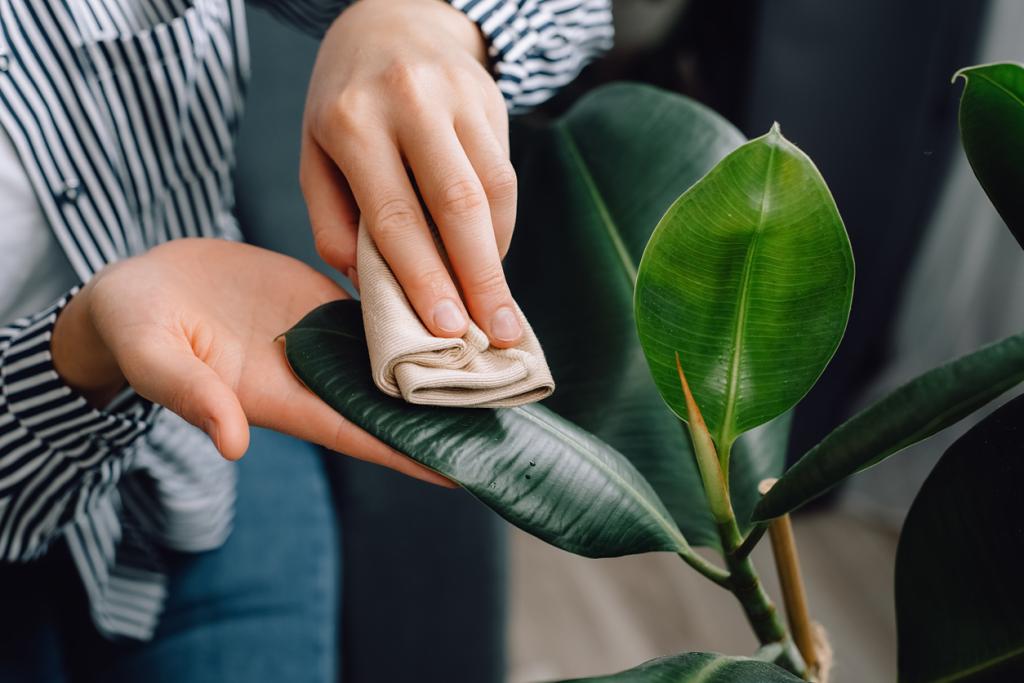
If you’re feeling at a loss when it comes to caring for your indoor plants – no matter how low maintenance they may be – we’ve pulled together some popular FAQs, and shared answers to them for you below.
Plants in a Box has shared an informative video on everything you need to do to your soil before introducing your plant to it. Watch it here:
Again referring to Plants in a Box, the answer to this varies considerably. Some suggest using a finger to feel how moist the soil is, and keeping an eye out for signs of dehydration (collapsed plant) or root rot.
Alternatively, you can use something like a Sustee, which will signal to you if your plant has had enough to drink.
Plants in a Box shares that signs your plants may be victim to pests include “Stunted growth, yellowing, leaf drop and sick looking foliage…”
You can read more about caring for your plants here.
As we’ve mentioned a few times in this article, some plants are toxic to animals (to humans, too). Before you buy any plant and bring it into your home, it’s wise to research its impact on animals and whether it’s safe.
Yes. As the ABC shares here, dust can prevent your plants from being able to breathe easily. So, ensure you’re giving them a good clean every so often.
Leave a Reply
You must be logged in to post a comment.